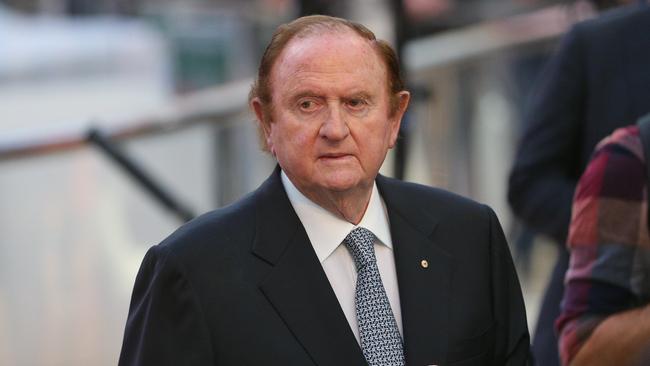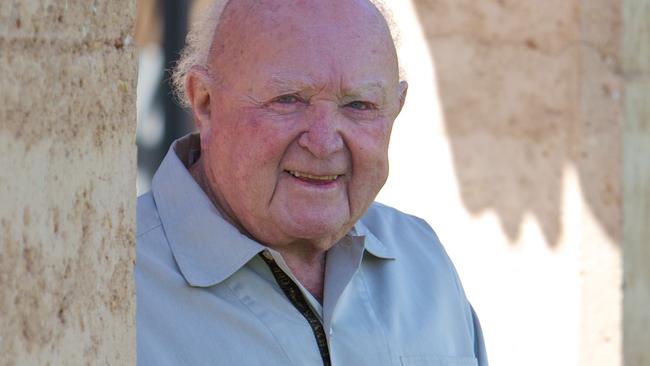Australia’s retail future gets interesting as Besen family sells Highpoint stake
BOTH the Besen Highpoint sale and the Gandel Chadstone expansion come at seminal pivot points for retail and property ownership in Australia, writes Terry McCrann.

Terry McCrann
Don't miss out on the headlines from Terry McCrann. Followed categories will be added to My News.
ONE of the wisest pieces of advice — narrowly about investment, more broadly about negotiating your journey through life — was given about the late Kerry Packer, father of course of peripatetic James.
Simply, if Kerry was selling, don’t be the buyer; and somewhat less pungently also the reverse.
With that in mind, what to make of the sale by one of Australia’s great property owning families of its last big stake in ‘bricks-and-mortar’ retail ownership? A question, which is given added potency because another member of the extended family is going in exactly the opposite direction?
Melbourne’s Besen family has quit its 25 per cent stake in the biggest shopping centre west of the CBD at the same time the Gandel family is making Chadstone — which is not only the biggest centre east of the CBD, but indeed the biggest in Australia (and, as it used to be said in the day, the biggest in the southern hemisphere) — even bigger.
The patriarch of the Besen family is Marc. His wife Eva is the sister of John, the patriarch of the Gandel family — so one half is getting out of retail property as the other goes in considerably deeper.

Indeed, even more specifically, John and Marc jointly built the Sussan fashion retail chain, which after starting wholly in the Gandel family ended (up) subsequently (and remains) wholly in the Besen family, when Gandel sold out to his brother-in-law in 1983 to put (almost) all his eggs in the Chadstone basket.
He bought (the quite unrecognisable to a modern shopper, very, very tired) Chadstone from the old Myer Emporium when Myer was at very low ebb in 1983. Fast forward 34 years, and as they say, the more things change …
The events swirling around Myer back in 1983 not only set Gandel totally on the property path, it also brought then Melbourne ragtrader Solomon Lew onto the Myer register — and then on to effective control of Coles Myer when the two great retailers merged in the mid-1980s.
There’s a lot of history, a lot of Melbourne in all that; and about corporate Australia more broadly. But the Gandel and Besen stories also fit into the broader explosive dynamic of retail property ownership, one of the big drivers of billionaire creation in Australia over the last few decades, courtesy of our population Ponzi.
What they were doing in Melbourne, the Lowy family under its patriarch Frank was doing — on a much grander and more globally ambitious scale — in and out of Sydney. With fellow Sydneysider Gerry Harvey marrying retail and property in a somewhat different fashion in Harvey Norman.

So much for history: both the Besen sale and the Gandel expansion come at a seminal pivot — indeed, pivots, plural — point(s) for retail and property ownership in Australia.
Narrowly, the Besen sale is a conventional transaction. It’s a minority stake and globally record low interest rates and a global hunger for yield investments give it a very attractive capitalisation value.
The GPT group is not just the obviously buyer but the rational buyer: it’s pot-committed to ownership of regional shopping centres. Going from 75 to 100 per cent is a no-brainer.
Even so, bricks-and-mortar retail is at a very interesting point(s). There are a lot of empty high street shops even in high residential growth areas of high population growth Melbourne and Sydney.
Centres retain high retail tenancies, but they have always and remain critically anchored by David Jones and Myer in non-food retail and of course Woolworth and Coles in food.
DJs and Myer are not living symbols of great profitability and high-growth futures; Woolies and Coles are still (broadly) recording growth but at a big cost in margin.
The problems of the first group can be sourced in a combination of over-investment in bricks-and-mortar retail (including the arrival of the Zaras and Uniqlos) and the explosion of the — global — online alternative. Plus the category killers like JB.
While the food duo have been assailed by their own price war since the 2008 Wesfarmers takeover of Coles and the relentless growth of Aldi to a size that now matters. So far, the digital space has not been a big driver.
But, we ain’t seen anything yet. The — rampaging — elephant in the US retail room is heading our way. Amazon of course. It’s not going to be ‘shopping-centre friendly’.
In the US, Amazon — and range of others factors: economic, business and societal — have seen hundreds of shopping centres, malls, shuttered. And that’s just as the digital dynamic really starts to pick up steam. We will now see how this plays out down under. The extended Besen-Gandel family gets a particularly interesting mix of ringside seats.
SO IT’S ON TO CUP DAY
JUST for the record, today’s Reserve Bank interest rate statement will be another ‘non-event’, marking exactly one year of a steady official rate and also of ‘rate guidance’.
The important point to be understood is that it also effectively locks in exactly the same for the next two RBA statements. If the RBA is not going to kick off a change on the back of the June quarter CPI (and it never was), it now won’t do that until (at the earliest) after the September quarter CPI — at the Melbourne Cup Day meeting.
Let me be absolutely clear: I am not predicting that it will do so. Apart from anything else, it is not absolutely certain that the next rate change will be a hike. Simply, that absent a left-field shock that forces its collective hand, Cup Day is the next opening if governor and board get to feel the itch.
The official rate to really watch is the US rate, even if it doesn’t change.



